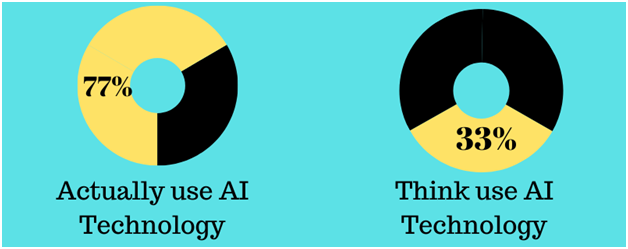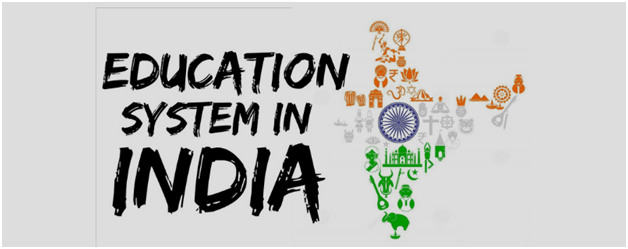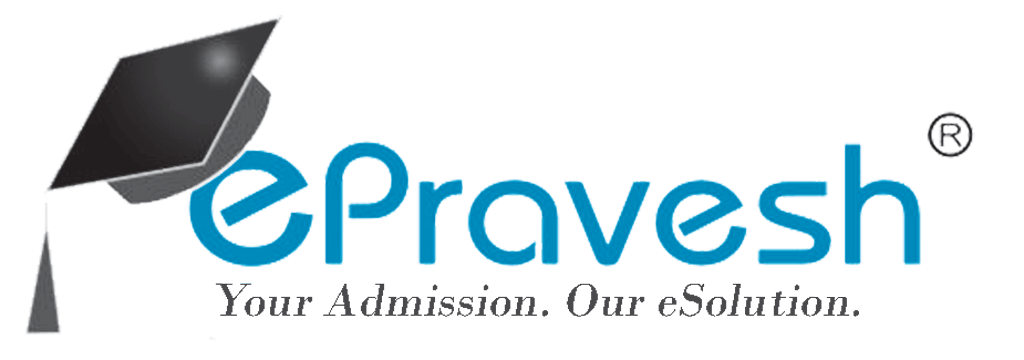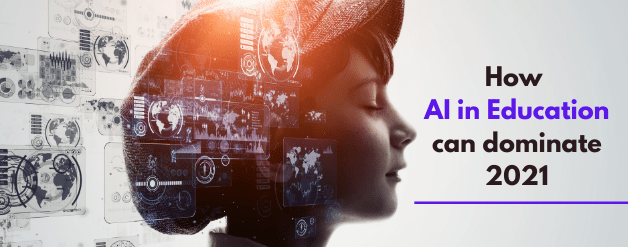Article Contents
Introduction - AI in Education
What do you think of when you hear the term Artificial Intelligence, popularly known as AI?
A dystopian future where machines revolt and take over the human race?
Or future where human capabilities are furthered with the help of AI and we enter a new era of unprecedented development?
It is easy to get scared of Artificial Intelligence with many science fiction movies and science fiction literature presenting a dystopian future with AI. After all, it’s not easy to trust a small semiconductor chip, with dimensions in millimetres, to make important decisions and suggestions.
AI hardware is the definition of the proverb ‘Good things come in small packets’. An AI chip of dimensions in mere millimetres houses an astounding 21.1 Billion transistors!
AI has a lot of potentials. It can do any task in seconds, for which humans might require many hours. Though many consumers don’t understand that they are using an AI-powered device or an AI-powered program, the reality is quite different.
Let us see the ways in which AI has affected different industries and sectors and how AI in education can change the dimensions of the education territory.

How AI has an impact across industries?
AI is a machine which is developed in such a way that it will exhibit behaviour exactly like humans. These machines are capable of thinking like humans and also mimic human actions or reactions. Thus these AI powered machines can perform the most complex and tedious task within seconds and that too with perfect accuracy.
AI is growing at a brisk rate. It is expected to be a US$ 60 Billion market by 2025 and the global GDP is expected to grow by US$ 15.7 trillion by 2030 because of the contribution by AI.
AI has already penetrated our lives on a personal level. According to a study by creative strategies, around 97% of Smartphone users are using AI-driven voice assistants like Siri and the Google voice assistant.
While 33% of consumers of technology think they use an AI-powered device when actually 77% are actually using an AI-powered device. (source: Pega). People are using AI-inspired technology more than they think they do.

Did you know that now AI is being used to save lives?
A team from the Massachusetts Institute of Technology’s Computer Science and Artificial Intelligence and Massachusetts General Hospital has developed a program that can predict from a mammogram if a patient can develop breast cancer, up to five years in the future! (Source: MIT News)
Isn’t it amazing that a computer program can predict whether you might suffer from a life-threatening disease, up to five years in the future?
This example is a clear testament to the power and potential of Artificial Intelligence. There can be many more such examples wherein AI can help predict the problems such as natural calamities or recession which might occur in future.
Thus, we can see that AI is being used in many sectors. It is also being developed to be used in many more sectors in different ways. Let us know see how it can be used in the Education sector.
The state of the Indian Education System
To put it in simple words, the education sector is massive.
Herculean.
Gargantuan.
The population of India is young. More than half of its population is under the age of twenty-five years. The student population in India is at a staggering 315 million students.
If we were to draw a simple comparison, the population of students in India is only a few million students short of the entire population of the United States of America, the 3rd largest country in the world in terms of population. And, the number of students is only growing!

The Indian education system, however, is going through a crisis.
According to the 2016 statistics of the Human Resource and Development (HRD) Ministry of the Government of India, there is a shortage of one million teachers. In rural India, sometimes one single teacher has to teach multiple subjects such as Mathematics, Science and Social Studies to a whole batch of students irrespective of their interest or specialization in a particular subject. In universities and colleges, there is a chronic shortage of faculty in multiple departments.
Educational infrastructure is also crippling, and it lacks investment. This means that even though students are graduating, they do not have enough knowledge and practical or hands-on experience of their field which leaves them under prepared for a job. This makes them susceptible to unemployment due to intensifying competition and industry standards.
In recent years, parents and students alike have complained that the education system in its present state does not contribute to the overall development of the child. The system focuses on rote learning and not the practical implementation of the theory. There is little scope for students to excel in sports and arts, and often these fields are not encouraged but frowned upon.
The system also fails to recognize that each child is different and one standard method of teaching may not be suitable for every child. Students, who don’t understand concepts in class, often fall behind their peers and lose confidence. This implies that the education system is not inclusive of all its pupils and their different mindsets and interests as well.
All of this is happening in an era when the world is not only fighting for the Right to Education but the Right to Quality Education. Many organizations are campaigning for the right to quality education and improving education standards around the world.
The United Nations adopted the Sustainable Development Goal (SDG) which says “Ensure inclusive and equitable quality education and promote lifelong learning opportunities for all” and it aims at providing quality education for all worldwide by the year 2030.
Thus it has become extremely necessary to adapt better educational policies as well as innovative technologies by the educational entities if we wish to bring any improvement in the current state of Indian education system.
The right inheritance of AI in education can prove very beneficial in raising the technological standards of the education system. Let us see how.
How AI in education can be the key solution to improving the Education System?

As we have seen in the examples above, AI is helping to enhance the activities carried out in many sectors.
The education sector has been slow in the uptake of AI in education, mainly due to apprehensions of educators and parents about trusting machines in teaching students. But now AI is being used to revolutionize the education sector and answer the many problems that have been plaguing the education sector for many years.
In India, the Central Board of Secondary Education (CBSE) very recently introduced two teachers’ handbooks to help integrate AI in schools, in line with its target to teach 22,000 schools with the help of AI and other futuristic technologies.
The first facilitator’s handbook is about the AI curriculum for standard 8th and 9th students. The curriculum will take up 112 hours, and is based on experimental methodologies covering both social and technological skills.
The second facilitator’s handbook is about AI integration across subjects to enhance the multidisciplinary approach in the teaching-learning process with the integration of AI. This handbook talks about how schools can use of AI in education can train teachers from class 6 to class 10 with respect to relevant topics/themes from their respective curricula. This handbook discusses how AI-based tools can enhance learning within and outside classrooms. (source: Times of India).
The AI in the education market is supposed to reach USD 2 billion by 2023 growing at 38% CAGR in the forecast period 2018-2023 (Source: Market Research Future).
All of this shows that the education community is realising the importance of introducing AI technology in the education system and how it can be used as a key solution to address the drawbacks or issues which the current education system is facing. The education community is now accepting AI as a tool that can enhance the teaching-learning process and which would benefit teachers and students alike.
Let’s see some other ways in which AI is bringing about the much-needed advancements in the education system.
AI in Education can help teachers in conducting exams
Examinations are an inseparable part of education, and they are important milestones in a student’s educational journey.
Exams require a lot of planning, right from setting question papers, printing both question papers and answer sheets, distributing these question papers across all examination centres, collecting the answer sheets, evaluating them and then finally processing the results of the exam.
This whole process often takes months to finish, and it is labour-intensive and costly. By the time one examination cycle is finished, it is time to start planning for the next examination. This whole process takes up a lot of time and efforts of the teachers and burdens them with more work.
This is where AI in education can be brought forward. AI-powered online examination tools can be of tremendous help. These are now being used by many universities to conduct online exams. These systems set the question papers themselves by referring to a pre-existing question bank.
Such question banks are designed by subject matter experts already and they can be updated and edited as per the need and convenience of the institute. All they (teachers) need to do for an online examination system is to design an online question bank and moderate the question paper generated by the system.
After this is done, all tasks starting from sharing exam schedule with the students, right up to calculating the result will be done by the online examination system.
Since the exam is online, there is no need to print and distribute question papers and answer sheets. The system shares credentials with the students, who are eligible for the exam using which they can log into the system, get their identity verified and start with the exam. The exam invigilation can be carried out using different AI mechanisms.
Thus, the online examination systems which are powered with AI save teachers a lot of time and energy, which they can dedicate to students. This will also help to reduce the burden of administrative tasks on them as also help the management to save costs to a great extent.

AI in Education can help teachers to improve Teaching Techniques
As we have discussed before, one standard type of teaching technique may not be suitable for all students. Teachers need to understand how students respond to different techniques and which technique or method is more effective in helping students understand different concepts.
Let’s also consider a scenario. One technique which might be useful in teaching one concept, might not necessarily work for another. Thus it becomes quite difficult for teachers to come up with the perfect way to teach students.
The adequate intervention of AI in education techniques can help teachers solve this problem by taking an analytical feedback from AI machines.
AI can monitor the batch’s performance in a quiz or test and give detailed analytics about the batch’s performance for various subjects and topics. With the help of this feedback, teachers can conclude exactly how a particular student responds to a certain teaching technique.
Over time, with sufficient feedback provided by AI, teachers can come with a perfect strategy to teach students. An added advantage of this feedback system is that teachers know which students are lagging, and they can personally work with these students to help them understand concepts.
AI can also be developed to teach a complex topic to students. AI can create visuals of such complex topics for the students which would help them understand quickly and retain the knowledge for longer time.
AI in Education can help in improvising Personalised Learning
We have started using AI-powered personal assistants on a daily basis and for personal tasks like making a reservation at a restaurant, booking flight tickets, ordering something from Amazon with a mere voice command, making an appointment with your dentist and so on.
So, we have entered an era where everything can be personalized to suit our tastes and interests. The way we viewed machines and technology- A series of rigid codes capable of doing only one task is changing.
Many social media apps and websites use AI algorithms to track your activity and understand your preferences and areas of interest to curate a personalized feed for you and give you a better experience. You can notice this in the typical ‘for you’ section on many websites and platforms you frequently visit. This principle of personalizing technology can be used in education as well!
AI can understand and adapt to a student’s learning abilities and it can come up with personalized teaching techniques to help students understand concepts more easily. AI can also help students understand the practical implementation of theory, and go beyond rote learning.
Personalized AI assistants can be used to address the shortage of teachers in the education sector. These tools find the best ways to teach students by studying their behaviour and response to different techniques and help students learn at their own pace.
An added advantage of such tools is that they can be used for students with special needs. AI can come up with the right methods of imparting education which would be unique and best suited to the needs of the particular child. This can greatly contribute to the development of each and every child in spite of his/her abilities or inabilities.
AI in Education can help simplify the Administrative Tasks
In an education institute, the teachers need to participate in administrative tasks as well. Administrative tasks like keeping attendance, grading quizzes and tests and correcting textbooks, etc might seem small but they do burden the teachers and takes up a lot of their time and efforts.
AI-driven systems like biometric attendance systems and online grading tools can be used to reduce the burden of administrative tasks on teachers. Teachers can use this time to focus on solving children’s queries, giving more attention to the ones who are lagging and helping the children with special needs.
AI in Education is making Online Exams more secure
Online examinations have gained wide acceptance in recent years. But people are wary to accept the credibility of online exams because of various malpractices like impersonation and cheating.
One of the advantages of conducting online exams is that it comes with n-number of checks and balances to avoid any malpractices from being carried out. Perhaps, these checks and balances make online exams more secure and efficient in rooting out malpractices.
Offline exams still have the risk of human errors which won’t be a problem with online exams which are developed using AI features.
Various AI technologies like Facial Recognition and Voice Recognition are helping to tackle these malpractices. As these AI based mechanisms are extremely sensitive to voices and movements, they make it absolutely impossible to carry out any sort of malpractice. AI has made online exams more secure and as a result, online exams have gained wider acceptance.
AI has also helped to cut down the costs involved in arranging exam centres, infrastructure and invigilators for exam.
What is the future of Artificial Intelligence (AI)?
AI has already brought about many changes in the education sector. The number of sectors opting for AI is increasing and so is the number of developers working on it. New use cases and AI based solutions to automate those cases are being created every day.
AI based education has become more accessible and personalized for students, thus improving the quality of education we receive. It is predicted that in the future, students will have a personalized assistant, a robot, throughout their school, if not in their lives. Similarly, there will be AI-powered assistants for teachers to help them in certain tasks like grading assignments and correcting notebooks.
AI will also help connect classrooms across the world and create a link between students worldwide. This will help bring the globe to students’ classrooms and help them expose to different views, opinions, and cultures. AI will facilitate in building a holistic environment in classrooms.
Yet, with all of these advancements, we are only at the tip of the iceberg. There are many more possibilities with AI. We need to dig deeper to reap the full benefits of this marvellous piece of technology.
The coming year 2021, is going to provide us with ample opportunities to explore this fascinating and advantageous yet profitable technology. So brace yourselves up to welcome the dominance of AI with open arms!
About the Author

Swapnil Dharmadhikari
Swapnil has experience of more than 15 years in the Information Technology sector. He has been working on digital platforms in the education sector. Swapnil is an avid reader and writes articles on technology and leading developments in the education and IT sectors.
Swapnil is the founder of Splashgain, an Education Technology company from India working on various innovative EdTech platforms for examinations, proctoring solutions, digital admission process and more. Splashgain has been working with many educational institutes and universities for AI-powered innovations and solutions to transform the education sector.
Splashgain has also filed a patent for an innovative product based on AI.


